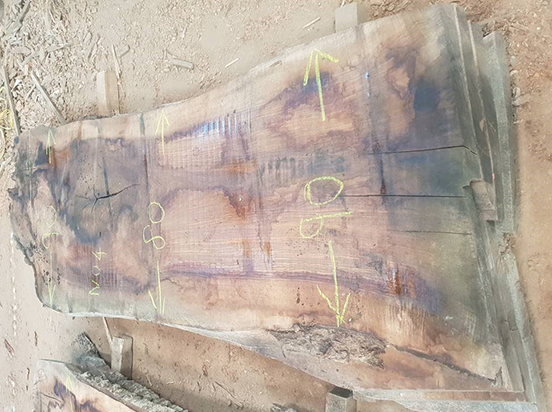Articles: English Walnut – The Table Topper
We were recently asked to source a piece of Waney Edge English Walnut (Juglans regia) for a bespoke table-top. We searched high and low for the perfect rustic looking piece which would be turned from a rough diamond into the finished article!
The work that’s gone into turning this piece of wood…

… Into this polished piece of furniture …

… Is absolutely astounding and is a prime example of why wooden furniture is so spectacular.
Characteristics of English Walnut Timber
Walnut is a highly sort after timber for use in furniture and is spread throughout Europe. Although the wood isn’t native to Britain it was introduced during the 15th Century. Depending on origin the colour of the timber can vary immensely, and English Walnut runs from a light Grey to a light brown (slightly darker in places).
The working capabilities of English Walnut timber are astounding so the timber can be shaped and finished well. Remember though the timber can be stained when in contact with Iron under damp conditions.
More about Walnut
Walnut is native to the Himalayas, Iran, Lebanon, Asia Minor and Greece. With the tree then being introduced across Europe, the majority of commercially supplied Walnut comes from France, Italy and Yugoslavia.
The tree can grow between 24m and 30m tall with a trunk size of around 1m (sometimes a little more). The preferred growing conditions for the Walnut tree are fertile alkaline loam soils. The nuts produced from Walnut trees are an important food source for small mammals such as mice and squirrels while its leaves are often eaten by caterpillars and micro moths making it an important part of the ecosystem.
In Roman Mythology Jupiter lived on walnuts when he lived on Earth which is how it got its Botanical name Juglans. Its full name is Juglans Regia which means ‘royal nut of Jupiter’.







 Main Menu
Main Menu

